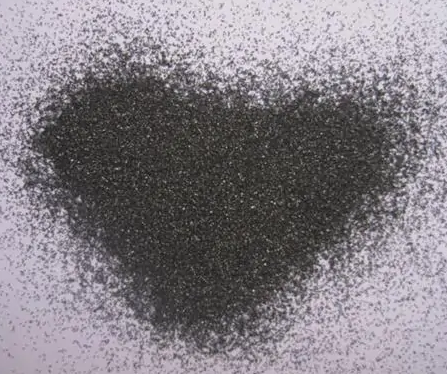Professional industry ceramic supplier, silicon nitride, silicon carbide, aluminum nitride and any other kinds of ceramics.
Hafnium boride, gray with metallic luster crystals. The melting point is 3250 degrees Celsius, the conductivity is high, and the chemical properties are stable. Almost non-reactive with all chemical reagents (except HF) at room temperature. It is prepared by mixing and heating hafnium dioxide with boron carbide or boron oxide and carbon powder. Used as a high temperature alloy.

Hafnium Diboride Ecological Data
Generally not hazardous to water, do not discharge material into the surrounding environment without government permission.
Hafnium Diboride Properties and Stability
It will not break down when used and stored in accordance with specifications. It does not react with the mixture of concentrated sulfuric acid and potassium sulfate and phosphoric acid at room temperature, but reacts with the mixture of concentrated hydrochloric acid and concentrated nitric acid.
Synthesis of Hafnium Diboride
1. Hafnium boride can be obtained from a mixture of hafnium chloride, hydrogen and boron bromide through a red-hot tungsten wire.
2. The hafnium dioxide and boron are heated in vacuum in the presence of carbon according to the stoichiometric ratio, and the temperature is kept at 1000~1750℃.
Overview of Hafnium Diboride HfB2 Powder
Hafnium boride is a gray crystal with metallic luster. It has high conductivity and stable chemical properties. Almost non-reactive with all chemical reagents (except hydrofluoric acid) at room temperature. It is prepared by mixing and heating hafnium dioxide, boron oxide or boron carbide and carbon powder, or by reducing hafnium tetrachloride and boron trichloride under hydrogen at 2000°C or by direct reaction of hafnium and boron. It is used as a superalloy.
Hafnium diboride has high melting point, high hardness, good electrical and thermal conductivity and good neutron absorption properties. It has important applications in the fields of ultra-high temperature materials, superhard materials, electrode materials and neutron absorption materials.
With the development of material technology, the application fields of hafnium diboride ceramics and composite materials are more and more extensive. Obtaining low-cost, high-quality hafnium diboride powder is an important R&D director at home and abroad. Hafnium diboride is difficult to sinter. In order to improve the sintering performance, it is necessary to obtain ultrafine powder. Although nano-powder has excellent performance, it has high cost, is not easy to disperse in the process of raw material processing, and is difficult to process. Therefore, the development of submicron hafnium diboride powders has attracted more and more attention.
Hafnium diboride belongs to ultra-high temperature ceramics, which are ceramics composed of hafnium and boron. Its melting temperature is about 3250°C. It is an unusual ceramic with high thermal and electrical conductivity, with the same properties as isomorphous titanium diboride and zirconium diboride. It is a grey metallic look material. Hafnium diboride has a hexagonal crystal structure with a molar mass of 200.11 g/mol and a density of about 10.5 g/cm³.
Hafnium Diboride HfB2 Powder Applications
Hafnium diboride in wear-resistant coatings. It is also considered for use in ultra-high temperature composites with silicon carbide (SiC) due to its excellent refractoriness. The addition of silicon carbide improves its oxidation resistance.
The oxidation resistance of hafnium diboride is temperature and pressure dependent. At a temperature of 1500 °C and a pressure of 1 atm, a protective scale of hafnium oxide is formed. When the temperature rises above 1600 °C and the pressure drops below 1 atmosphere, the oxidation resistance of HfB2 will be significantly reduced. Under these conditions, the boiling point of B2O3, one of the oxidation products of HfB2, will be exceeded and a protective oxide layer will form.
Due to its strength and thermal properties, the material could be used in ultra-high-speed reentry vehicles, such as ICBMs or heat shields on aerodynamic fronts. Unlike polymers and composites, HfB2 can form aerodynamic shapes and does not ablate during reentry.
Hafnium diboride has also been investigated as a possible new material for control rods in nuclear reactors.
Hafnium diboride has also been investigated as a diffusion barrier for microchips. If synthesized correctly, the barrier thickness can be less than 7 nm.
Hafnium Diboride HfB2 Powder Price
The price of hafnium diboride HfB2 powder varies randomly with factors such as production cost, transportation cost, international situation, exchange rate, and changes in supply and demand of hafnium diboride HfB2 powder market. Tanki New Materials Co., Ltd. aims to help industries and chemical wholesalers find high-quality, low-cost nanomaterials and chemicals by providing a full range of customized services. If you are looking for Hafnium Diboride HfB2 Powder Materials, please feel free to get in touch for the latest Hafnium Diboride HfB2 Powder prices.
Hafnium diboride HfB2 powder suppliers
As a global supplier of diboride HfB2 powders, Tanki New Materials Co., Ltd. has extensive experience in the performance, application and cost-effective manufacturing of advanced engineering materials. The company has successfully developed a series of powder materials (including oxides, carbides, nitrides, single metals, etc.), high-purity targets, functional ceramics and structural devices, and provides OEM services.
| Hafnium Diboride Properties | |
| Other Names | hafnium boride, HfB2 powder |
| CAS No. | 12007-23-7 |
| Compound Formula | HfB2 |
| Molecular Weight | 200.112 |
| Appearance | Black Powder |
| Melting Point | 3250 °C |
| Boiling Point | N/A |
| Density | 10.5 g/cm3 |
| Solubility in H2O | N/A |
| Exact Mass | 201.965161 |
| Hafnium Diboride Health & Safety Information | |
| Signal Word | N/A |
| Hazard Statements | N/A |
| Hazard Codes | N/A |
| Risk Codes | N/A |
| Safety Statements | N/A |
| Transport Information | N/A |
